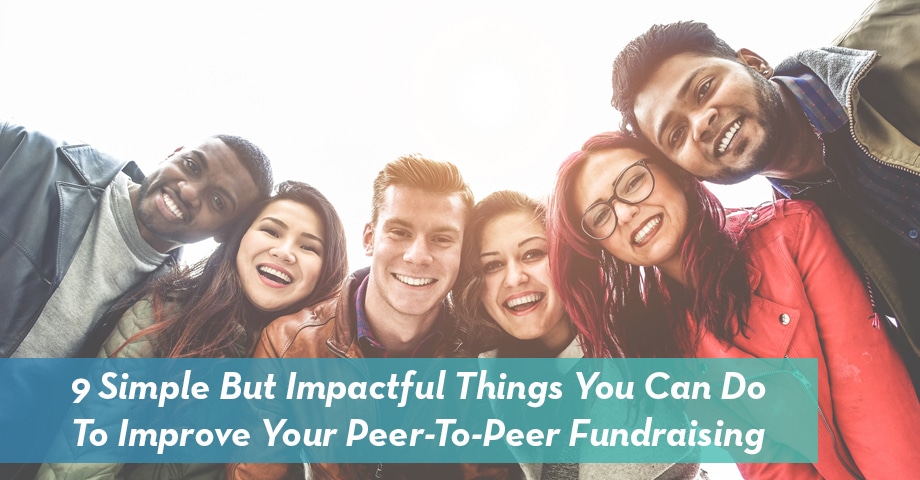
9 Simple But Impactful Things You Can Do to Improve Your Peer-to-Peer Fundraising
Many nonprofit fundraising strategies include peer-to-peer campaigns and events. Often, though, the trick is to grow your peer-to-peer fundraising programs while working with limited resources.
Here are 9 simple but impactful things you can do to improve your peer-to-peer fundraising campaigns and events:
Make things easier for your website visitors.
Pretend you know nothing about your fundraising program and go to the home page of your website. Step through the online process. Ask yourself these questions, take notes as you go, and work with your website manager to make improvements:
- Is it obvious what I should do if I want to learn more, register, or donate?
- How many clicks does it take to sign up or donate?
- How many questions am I asked during the registration or donation process (and do we really need to ask all of them)?
- If I’m donating, is it easy to find the person I want to donate on behalf of?
- If I’m registering as a fundraiser, how easy it is for me to sign up and then start fundraising?
Make sure your messaging is impactful.
To get your supporters excited about helping you raise funds, you need a compelling story to tell them, and also for them to share with friends and family. As you build your story and write communications for your fundraising campaign or event, answer these questions:
- What makes our organization unique?
- What impact are we having on our mission?
- What problem does this particular peer-to-peer fundraising campaign solve?
- How do we want people to feel about our campaign (emotionally touched, inspired, outraged)?
Embrace the peer-to-peer culture.
Your organization needs money to do its work, and many of your supporters will be happy to help you raise some of these funds — but you have to ask people to fundraise for you! Sending an email and direct mail to your constituents is a good way to recruit participants to fundraise for you, but why stop there? Think about other communication channels: social media, your website, signs at your organization’s events, public service announcements, local TV news shows — all of these outlets can be used to ask people to sign up to help your organization.
Leverage your participants.
The supporters who register to fundraise on behalf of your organization can be your biggest cheerleaders. See how else they want to help, and be sure to ask them to recruit other participants. You’ll be likely to get more fundraisers on board.
Tie money to real items.
Associate the donation levels for your campaign or event with what the funds will provide for your organization. Letting supporters know that their donation will help feed a family of four or send a child to school for a year is more impactful than simply asking for a specified amount of money. This also helps make raising money fun — a win for all!
Use clear calls-to-action.
Every communication — whether it’s an email, text, or social media post — should have one clear purpose. When creating content, make sure you identify the action you want your reader to take and clearly communicate it (without adding in several other asks!).
Have strategic follow-up procedures.
Once someone registers, how are they communicated with? Make sure there are standard processes on communications used after someone commits to your cause. Some of these can be automatic while others may require action from a staff member. Some things to consider:
- Create a process for communicating with team captains
- Have a plan for reaching out to top fundraisers, your VIPs
- Develop a clear thank you program to ensure fundraisers and donors feel appreciated
Take time for one-to-one outreach.
Consider picking up the phone and calling your fundraisers. Ask them how things are going, and thank them for their work. Or, write a personalized note/email to thank fundraisers for their support. Also consider adding texts to the mix — they’re a great way to send a virtual high-five to fundraisers as they reach milestones.
Make sure your software platforms meet your needs.
If you don’t have a software platform designed for peer-to-peer fundraising, or if you do but the software is difficult for participants or staffers to use, it might be time to look for a new platform. To get you started, here’s a step-by-step guide for choosing a peer-to-peer fundraising platform.
Whether your organization is large or small, these simple approaches can make a big difference for your peer-to-peer fundraising campaigns and events. Give them a try!
Author Bio
